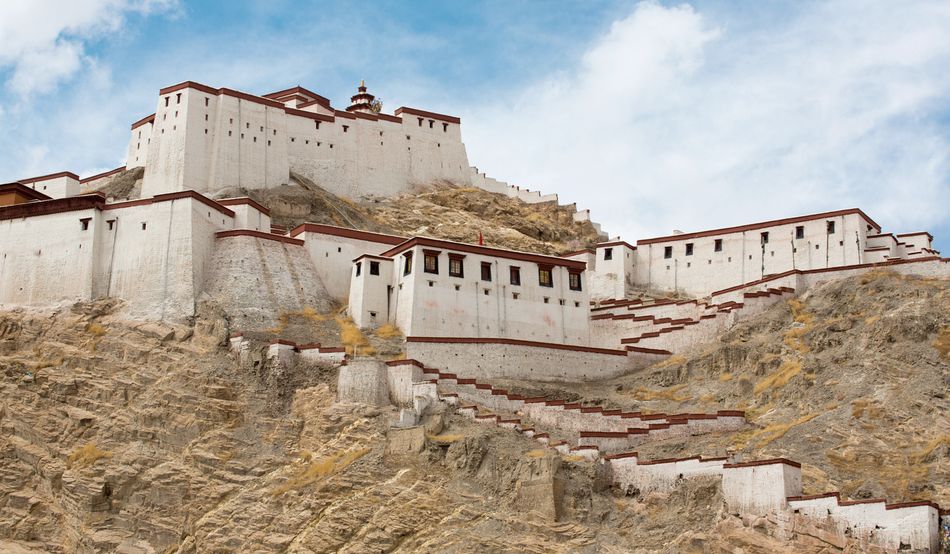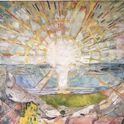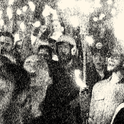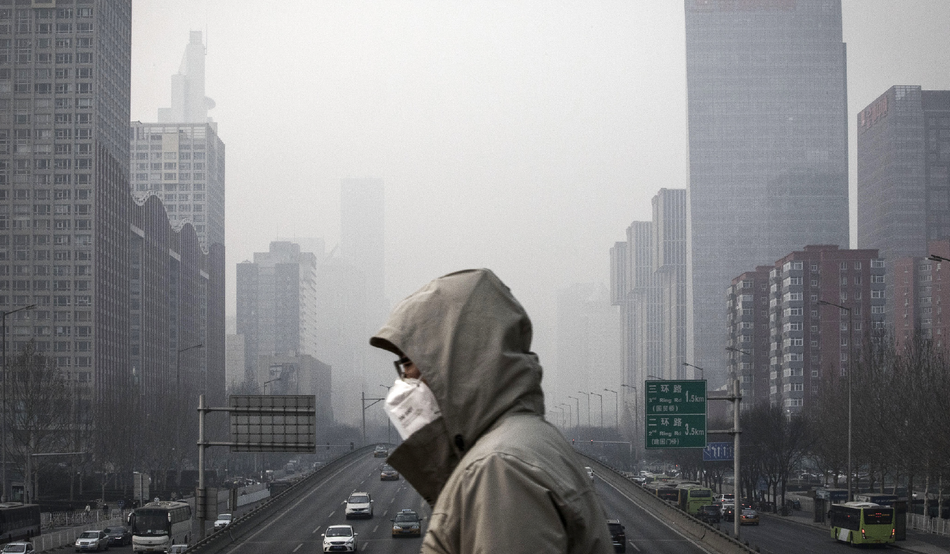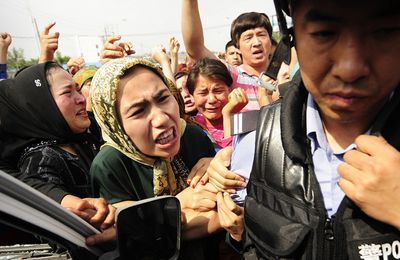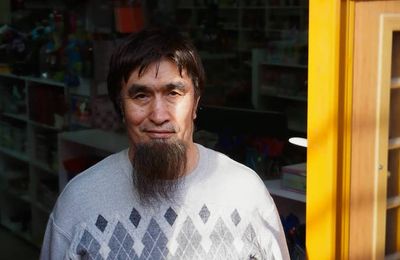In March 2018, the attention of the United States Senate was briefly drawn to one of the more unusual topics a political body might discuss: reincarnation, the belief that a soul that leaves one body can live again in another. The bipartisan resolution on the table stressed that recognition of Tibetan Buddhist leaders, including future incarnations of the Dalai Lama, should be determined solely by Tibetan Buddhist religious authorities without “external political or governmental interference”.
That resolution and the spirit behind it, little noticed at the time outside Tibetan circles, came sharply into focus on 2nd July in a crowded ceremonial hall in Dharamsala, in northern India. As his followers celebrated his approaching 90th birthday on 6th July, His Holiness the 14th Dalai Lama made a long-promised announcement on his future plans. There would, he said, be a next incarnation and his own office, the Gaden Phodrang Trust, will have the exclusive responsibility for their identification. In response, the Chinese foreign ministry repeated Beijing’s insistence that the choice of the next Dalai Lama follow “religious conventions” which, in Beijing’s view, means that the final decision rests with the Chinese government.
It is a core belief in Tibetan Buddhism that while living beings are condemned to a constant cycle of death and rebirth, the attainment of enlightenment brings release from the cycle of rebirth. Enlightened beings may still choose, however, to return to earthly life to help others along the spiritual path. Since his followers believe the Dalai Lama to be the earthly incarnation of Chenrezig, the Buddha of compassion, his death is the gateway to a new birth.
His decision to reincarnate will resonate far beyond the monasteries and temples of Tibetan Buddhism—and what China does next will reveal how tightly Beijing seeks to control religious freedoms, and use religious coercion to legitimise political control of Tibet.
For hundreds of years, senior Tibetan Buddhist figures have searched for the reincarnations of high-ranking religious leaders, or lamas, guided by dreams, celestial signs, divinations and prayers until a child was discovered who could confidently identify objects belonging to the previous incarnation. The child would then be taken to his monastery as the Dalai Lama and given a religious education in preparation for assuming his duties as a religious leader. This is how the current Dalai Lama, born in 1935 in the remote Tibetan village of Takster, was identified at the age of three.
In Tibet, however, things are no longer simple. In 2007, the officially atheist Chinese Communist Party (CCP) implemented an order that required all Buddhist institutions to seek provincial and government approval for the recognition of any reincarnated lama. Any reincarnate lama who did not have government approval would be considered unauthorised, and “reincarnation activities” without official Communist Party permission were banned. The reincarnation of major religious figures such as the Dalai Lama or the Panchen Lama—the second most senior religious figure among hundreds of lamas in the Gelug school of Buddhism—would, the order decreed, have to go through a further, special approval process from the state council, nominally the highest body of government in China. The 14th Dalai Lama later observed that the CCP’s interest in notable reincarnations might more appropriately be directed to finding the reincarnations of Mao Zedong and Deng Xiaoping.
Neither Karl Marx nor Mao left clear instructions to the party on reincarnation, so it is safe to conclude that its interest in the practice derives from the singular role that Tibet’s Dalai Lamas have held since 1642 when, with the aid of a Mongolian prince, the fifth Dalai Lama was installed as the supreme authority in Tibet. This arrangement endured, with occasional interruptions, until the Chinese invasion of Tibet in 1951.
As a political system it had an important weakness: the Gelug order is formally celibate, so temporal as well as religious succession depended on identifying a Dalai Lama’s reincarnation. This imperfect solution involved long periods of regency, and down the years a number of Dalai Lamas failed to reach adulthood. Still, despite the political uncertainties that regencies created, the Tibetan people remained deeply attached to this fusion of political and spiritual authority.
A year after the 1951 invasion, representatives of the Dalai Lama’s government reluctantly signed the Chinese government’s controversial Seventeen Point Agreement for the Peaceful Liberation of Tibet. It set up, in effect, the first iteration of “one country, two systems”, which Deng Xiaoping would later propose to the British for post-handover Hong Kong. It promised that the Dalai Lama’s government would remain in place, though with limited authority in two provinces of central Tibet, newly designated the Tibet Autonomous Region (TAR). Tibet’s religious beliefs and practices, the treaty promised, would be respected there—and central Tibet would be spared “socialist reforms”.
The full force of the Chinese state was brought to bear on what Beijing treated as a rebellious province
In two further Tibetan provinces, which were excluded from the TAR and divided between neighbouring Chinese provinces, the new communist government pursued aggressive socialist reforms, seizing land from monasteries, nomad herders and noble families, enacting often violent “struggle sessions” with those it named as landlords, and attacking and disbanding monasteries and nunneries. Tibetans in those areas, with material support from the CIA, rose in armed resistance.
In March 1959, many of them brought stories from the provinces to Lhasa, the Tibetan capital, during the annual Monlam prayer festival. Crowds surrounded the 23-year-old Dalai Lama’s palace, fearing that Chinese troops would detain him. As the situation deteriorated, the Dalai Lama, disguised as a layman, fled with his entourage to India. As he reached safety, he rejected the Seventeen Point Agreement on the grounds that it had been signed under duress.
The full force of the Chinese state was brought to bear on what Beijing now treated as a rebellious province, devastating Tibet’s culture and religious practices. In 1961 the mass starvation that followed Mao’s disastrous Great Leap Forward afflicted Tibet as it did the rest of China; monasteries were closed and thousands of monks and nuns sent to labour camps. The Panchen Lama, whom the Chinese government had considered more sympathetic to Chinese rule than the Dalai Lama, wrote a long petition to the Chinese leadership detailing the immense suffering that had been inflicted on the Tibetan people by Chinese policies. He was criticised and imprisoned in 1964.
Mao’s Cultural Revolution, an assault on both Chinese traditions and the Communist Party itself, all but completed the devastation two years later. Red Guards attacked the remaining monasteries, destroyed statues and sutras (religious texts) and razed buildings to the ground. The CCP labelled reincarnation a feudal superstition, and banned the recognition of reincarnate lamas. It was only after Mao’s death, in 1976, that the Panchen Lama was released from prison. He was not permitted to visit Tibet until 1982, and the slow and painful process of rebuilding could begin.
In exile, the Dalai Lama had become the international voice for Tibet, a globally celebrated figure, Nobel peace prize laureate and a favourite of Hollywood celebrities. More than 100,000 Tibetans followed him to India, and many continue to make the dangerous and increasingly difficult pilgrimage across the Himalayas to his home in Dharamsala, in Himachal Pradesh, to pay homage and receive blessings. Tibet’s principal monasteries have been recreated in India, where they try to maintain the traditions shattered in their homeland.
In Tibet, some monasteries have been rebuilt, albeit on a much smaller scale. They function under the increasingly intrusive control of the CCP, which views them as potentially dangerous repositories of a culture that places its faith in its religious authorities. Military barracks have been built next to many, to deal with anticipated Tibetan reactions to the Dalai Lama’s death. Having failed to extirpate Tibet’s religious traditions in the Cultural Revolution, Beijing now sought to control and co-opt them.
The first test of that approach came with the sudden death of the 10th Panchen Lama in 1989. After his release from prison, he had devoted his remaining years to trying to restore as much as possible of Tibet’s religious and cultural life. The search for his reincarnation became a key contest between the Dalai Lama and the CCP over who finally had religious credibility, and therefore secular authority, in Tibet. While Tibetan leaders entrusted with the search for the reincarnation followed religious traditions, the government reached for an object that it imbued with an imperial authority it claimed to have inherited.
The Palace of Peace and Harmony, popularity known as the Lama Temple, sits just inside Beijing’s second ring road, its golden roofs clearly visible to the passing traffic. It was built as a palace in the Qing dynasty, China’s final imperial house, and later converted to a monastery. In a glass case, on proud display, is a gilded vase that has come to represent Beijing’s claim to unchallengeable authority over reincarnation.
The vase is one of a pair, commissioned from the imperial workshops by the fourth Manchu emperor, whose ancestors swept down from Manchuria in 1644 to defeat the Chinese Ming dynasty and establish the most powerful and extensive empire since the Mongols, 300 years earlier. The Manchu emperors, like the Mongolians, nominally followed the teachings of Tibetan Buddhism, and in the early years treated Tibet’s Dalai Lamas with the respect accorded to an equal. But in 1792, following the death of the sixth Panchen Lama, the fourth Manchu emperor decreed that any disputes over future reincarnations could be settled by lottery.
He ordered the creation of two gilded urns, one to use for drawing lots for Mongolia’s most important lama, the Jebtsundamba Khutuktu, and one for use in Tibet. The Tibetans received the gift politely, though religious scholars argue they never seriously used it to decide such an important matter. Today, the CCP insists that no reincarnate lama is legitimate unless his name has been inscribed on an ivory tally stick that is then placed in a silk bag and drawn, in a supposedly blind lottery, from the Qianlong emperor’s Golden Urn.
The search for the 11th Panchen Lama brought its first test.
In 1995, after a six-year search, Chadrel Rinpoche, the abbot of the deceased Panchen Lama’s monastery, identified a six-year-old child called Gedhun Choekyi Nyima as the likely reincarnation. Though the CCP had strictly forbidden all contact with Dharamsala, he smuggled details and photographs of the final candidates to the Dalai Lama, who confirmed Chadrel’s choice but left it to him to make the announcement. At the last moment, the Chinese government insisted on the use of the Golden Urn, prompting the Dalai Lama to announce his choice, in case the wrong name emerged from the lottery.
In the days that followed, the Chinese authorities detained Gedhun Choekyi Nyima along with his family. They have not been heard of since. Chadrel, his secretary and the man who had carried the messages between Tibet and Dharamsala were all imprisoned. With Lhasa under military lockdown, a Golden Urn lottery was organised and Gyaincain Norbu, the young son of party members, was chosen.
The Panchen Lama episode was a clear demonstration of Chinese state power, but in the eyes of Tibetan believers it failed in its primary aim of establishing both Gyaincain Norbu’s legitimacy and Beijing’s right to dictate the choice. They commonly refer to him as the “Chinese Panchen”.
There was, however, a second motive in the forced selection of Gyaincain Norbu that will now assume critical significance: historically, the Panchen and the Dalai Lamas have each played an important role in recognition of the other. Through the Chinese Panchen Lama, Beijing aims to claim religious legitimacy for its political choice, hoping that once the charismatic 14th Dalai Lama is gone, international attention to the Tibetan cause will fade away and Tibetans will eventually accept central political control of their land and religion.
Keenly aware of the complications that will follow his death, the Dalai Lama considered ending the institution of the Dalai Lama to prevent its manipulation, and often said that he might not return at all. In 2015, this suggestion prompted a firm rebuke from the then chairman of the TAR, Padma Choling. “Whether [the Dalai Lama] wants to cease reincarnation or not…. this decision is not up to him,” he said. “He was chosen following a strict system dictated by religious rules and historical tradition and with the approval of the central government. Can he decide when to stop reincarnating? That is impossible.”
In India, the Dalai Lama has encouraged his followers to adopt secular democracy, setting up a government in exile that both rules the affairs of the exile community and claims to represent the interests of the people of Tibet. In 2011, he announced that political authority would henceforth reside not with him but with elected Tibetan leaders. Still, he remains a powerful symbol for millions of Buddhists around the world, for the approximately 120,000 strong exile community and for Tibetans in Tibet who follow him in secret. When he dies, the Chinese government will seize the opportunity to impose control over the reincarnation of Tibet’s most important religious symbol.
Reincarnation is compulsory, according to the Chinese Communist Party, but the process must be under government control
In a recently published book, the Dalai Lama set down a record of many years of fruitless negotiation with the Chinese authorities on this issue. He insists that only the person who reincarnates has legitimate authority over where and how he or she takes rebirth. And he has made it clear that if he does return, it will not be in China. In 2018 he even hinted that his successor need not be an infant but could be “a high lama” or, through a practice known as emanation, “a person around 20 years old”.
The Chinese government has rejected these options. A senior Chinese official claimed in 2015 that the Dalai Lama’s reincarnation “has never been purely a religious matter or to do with the Dalai Lama’s individual rights; it is first and foremost an important political matter ... and an important manifestation of the Chinese central government’s sovereignty over Tibet.
“Whoever has the name of Dalai Lama will control political power in Tibet,” he continued, adding that the government would never give up the right to decide the reincarnation of the Dalai Lama. Reincarnation is compulsory, according to the Chinese Communist Party, but the process must be under government control.
Beijing has also been planning for a moment that will resonate far beyond Tibet.
The spiritual authority of the Dalai Lama is felt wherever Buddhism is practised, including in Mongolia, Bhutan, and the Indian states of Ladakh and Sikkim, which directly follow the Tibetan tradition, and in Japan, Vietnam, Myanmar, several central Asian republics, Sri Lanka, Nepal and the rest of India, where there are significant Buddhist traditions. Even within China itself, 14m people identify as Buddhist. Not only must Beijing convince Tibetans of the credibility of its choice, but it will also be obliged to flex its diplomatic muscle to discourage any international challenge.
The reincarnation of Mongolia’s highest lama offered a hint of what might be to come. In 2017, the Dalai Lama announced the recognition of the new incarnation of the Jebtsundamba Khutuktu. The previous incarnation had left a testament in which he said he intended to be reborn in Mongolia, and that his reincarnation could be recognised only by his “root guru”, the Dalai Lama.
China immediately objected that the Golden Urn had not been used, cancelled a proposed $4.2bn loan to Mongolia and imposed sanctions on the country. They were lifted only when the government of Mongolia apologised for any unspecified “misunderstanding” that had taken place.
Geopolitics will influence responses to the approaching controversy, too: China is powerful enough to insist that recognition of its choice of Dalai Lama is essential to good relations, and many emerging economies with important trade relationships with China are likely to comply. For European governments such as Germany, which also has important trade relationships with China, the moment will be delicate.
European Union officials have repeatedly stated that the EU expects China to respect the Dalai Lama’s succession; the UK government has expressed support for religious freedom, and several EU member states have done the same. With Donald Trump in the White House, how the US congress will respond is harder to guess, and recent cuts in US aid have included support for the Tibetan government in exile. But also important is how India will react.
India has had a difficult relationship with Beijing since China’s invasion of Tibet made the two immediate neighbours, and their 2,000-mile border has frequently seen military clashes. India offered sanctuary to the Dalai Lama in 1959 and has since hosted his followers. It is the home of Tibet’s spiritual traditions in exile, which are the focus of attention for supporters of religious freedoms and of the Dalai Lama’s message of peace.
In May 2015, in a hint of his approach to Tibetan religious beliefs, Narendra Modi became the first Indian prime minister to visit Mongolia. To highlight the countries’ shared Buddhist heritage, he presented a Mongolian monastery with a sapling from a descendant of the bodhi tree in Bodh Gaya, northeast India, under which the Buddha is believed to have attained enlightenment. In March this year, 46 Indian members of parliament signed a declaration in support of the Dalai Lama’s right to determine his successor without interference from China.
One likely outcome of the political standoff between the exiled Tibetans and Beijing is that each will identify what they will claim as the only legitimate candidate for Dalai Lama. A critical test of India’s commitment to its protection of Tibetan religious traditions will be how far it supports the Tibetan exile community’s choice of a child born in India as the next Dalai Lama. Recent diplomatic moves suggest that Beijing may be trying to lessen tensions with India in preparation for the Dalai Lama’s death.
In Tibet itself, the government has long considered religious affairs a matter of national security or “stability maintenance”. Greatly reduced religious establishments now operate under heavy surveillance and are obliged to conduct political education and pledge loyalty to the CCP’s leadership. Officially recognised reincarnate lamas have been trained in “reincarnation management”.
Chinese officials have been posted to Tibetan communities to monitor people’s views and activities, and a wider policy of cultural integration has involved the closure of schools where children are taught in Tibetan, obliging them to attend boarding schools where they are educated in Chinese and learn allegiance to the government. Tibetan place names now appear on Chinese maps in sinicised form. The forced settlement of nomadic communities and the relocation of rural Tibetans, whose loyalty to the Dalai Lama is traditionally strong, has accelerated. The Chinese government argues that these measures are central to eradicating poverty, but critics see a political motive to the relocations, compounded by a long-established policy of encouraging Chinese inward migration to Tibet. The cumulative effect of these measures, Beijing hopes, will be the steady sinification of Tibetan society and with it a transfer of allegiance to Beijing and a compliant religious establishment.
With the Dalai Lama’s announcement on 2nd July, he has clarified his own intentions to continue his work outside Tibet, setting the scene for a standoff with Beijing after his death. It seems inevitable that Beijing will insist on imposing its own choice on Tibetans, while the Dalai Lama’s office will follow his instructions and choose a candidate in exile. Whatever the outcome of this unusual contest of wills, when the 14th Dalai Lama dies an internationally celebrated symbol of religious freedom will be lost. No successor, however chosen, is likely to match his influence or significance.

